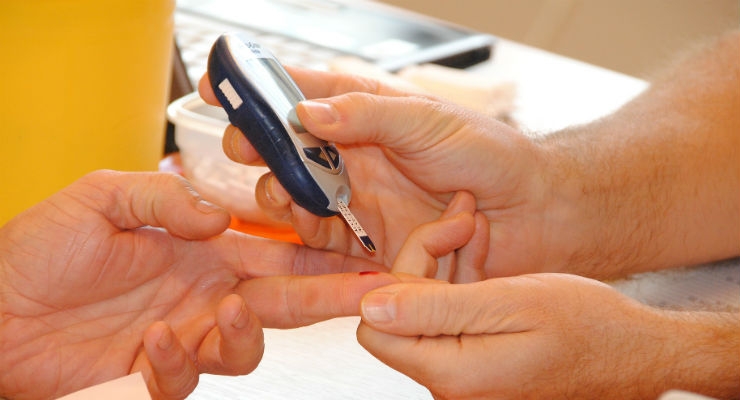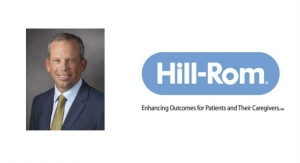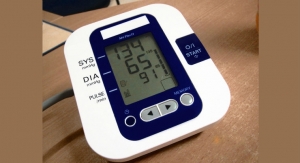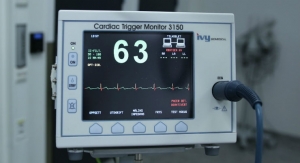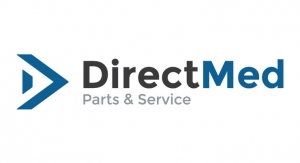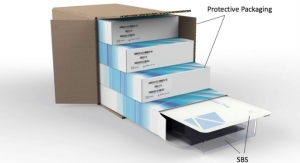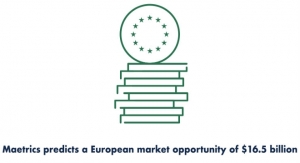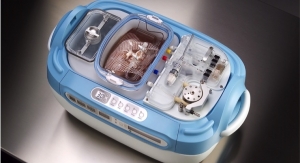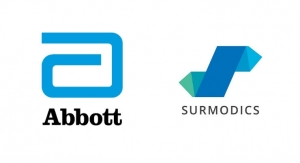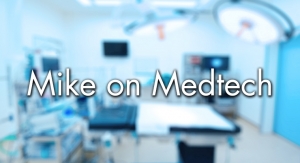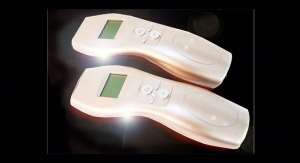Brian Moan, Director of Solutions Delivery Europe, and Norm Rabin, Director of Solutions Delivery—Maetrics04.27.18
Following the publication of the new EU In Vitro Diagnostic Medical Device Regulation (IVDR) in the Official Journal of the European Union on May 5, 2017, it is incumbent on manufacturers to re-evaluate their existing regulatory and business strategies to ensure they are fully compliant with the new framework by 2022, when it comes fully into force. All products already on the market must be brought into line by the end of this five-year transition period, as must new products placed on the market after the deadline.
It is clear manufacturers should be taking practical steps now to plan for implementation, but there are significant challenges in doing so. First and foremost is surely the number of modifications the new regulation contains. Expected changes include an increase in the number of definitions of an IVD, new classification and conformity assessment requirements, a more prescriptive approach to the labeling of products, and a requirement for manufacturers to submit clinical evidence and post-market follow-up for their products.

The two guiding principles of the IVDR are to put patient safety first and increase transparency. With these in mind, a new electronic database called EUDAMED will be introduced. Manufacturers must use this to report serious incidents, safety corrective actions, field safety notices, and periodic summary reports.
A further difficulty manufacturers will face in meeting the deadline is that Notified Body (NB) capacity is already stretched. With the number of NBs diminishing and their workloads increasing as they too seek designation under the new IVDR, there will be an over-demand on their services as manufacturers compete for their support in order to reap the benefits of early IVDR adoption.
The IVDR is a complex and lengthy document requiring manufacturers to make significant changes in a relatively short space of time to ensure compliance. Following are just some of the practical steps we are advising manufacturers to take as soon as possible to adequately prepare for this substantial and unprecedented European regulatory change.
Get to Grips with the Basics
Having studied the detailed requirements of the IVDR, brief executive management to make certain they gain a clear understanding of the importance and business implications of the regulatory changes. It is essential to ensure that overall responsibility for IVDR implementation is established and that a cross-functional program team is formed in order to cover all aspects. Consider organizational challenges: management awareness, staffing capability and availability, and budget implications. Perform a comprehensive gap analysis for both the products and the organization as a whole against the IVDR implementation plan to identify weaknesses and key areas of risk. This will highlight where the organization’s time and resources will most effectively be targeted.
Pay Attention to the Details
Having done the groundwork, now is the time to turn attention to the specific requirements of the regulation. In the first instance, identify and appoint a Person Responsible for Regulatory Compliance (PRRC) and be sure they are adequately qualified and trained. Plan their training, if applicable, as early as possible to minimize potential delays to implementation. Don’t overlook the importance of addressing the entire supply chain in executing the new IVDR. Review existing provisions and clarify roles and responsibilities of all business partners.
Check classification rules, verify conformity assessment routes for existing and future products, and take steps to address any changes. Determine the adequacy of clinical evidence and performance evaluation and studies, not forgetting to establish appropriate post-marketing surveillance arrangements. Review the suitability of quality management system (QMS) processes as well as any plans in place to transition to ISO 13485:2016 and build the new regulatory requirements into the QMS. Carry out assessments of technical documentation, product labeling, and existing product liability provisions to determine whether changes are required for IVDR compatibility. Finally, give special consideration to certification expiry dates versus transition period and enforcement date.
Stay Ahead of the Game
Bearing in mind their limitations, contact the selected Notified Body in good time and determine their capacity and availability to service the implementation plan. Ensure all preparations are in place for unannounced inspections from Notified Bodies. Continue to actively monitor the still-developing European regulatory environment and ensure regular IVDR implementation program progress reviews are held and included in the management review process.
With NB capacity and manufacturer resources stretched, many medical device companies are turning to specialist consultants who can offer them the required support and IVDR expertise on an outsourced basis to manage this challenging transition period. Such partnerships will position them one step ahead of the competition and ensure they are fully IVDR compliant by implementation deadline day.
For more detailed information on IVDR requirements, download a whitepaper on the topic here.
Brian Moan is director of solutions delivery Europe at Maetrics. A highly qualified industry expert, Moan is a proven leader with a strong track record in regulatory compliance as well as product quality and design. With over 20 years of experience working with medical device manufacturers, he previously held the post of head of a European-based Notified Body, and has extensive experience in the areas of CE marking, post market surveillance, and conformity assessments in compliance, including auditing, effective Technical File development and maintenance, and clinical evaluations. Moan is also a respected thought leader specializing in human factors and has been involved in MHRA working groups to develop industry guidance. He has frequently presented around regulatory issues and his standing as a thought leader is further confirmed by his role developing medical device presentations at Cranfield University in the UK as part of their MSc Program on Medical Devices.
Norman Rabin is a director of solutions delivery at Maetrics, with experience in the technical and managerial aspects of the life science industries. With over 30 years of experience in pharmaceutical manufacturing, quality, and compliance, Rabin has deep experience in aseptic processing, validation, compliance auditing, quality systems, and remediation. He has experience in assessing issues and finding innovative approaches to compliance and business needs. Rabin has proven skills in the technologies across the industry spectrum, including new facility planning, aseptic operations, solid dosage forms, biological purification, lyophilization, and the full range of qualification and validation processes. He also has expertise in all aspects of quality management systems, as well as extensive and successful interaction with regulatory investigators. Prior to Maetrics, Rabin was employed as a senior manager of quality systems at Roche Diagnostics. Before that, he worked for Eli Lilly, Gilead Sciences, and Rhone-Poulenc Rorer in managerial and director-level positions within the manufacturing and compliance sectors.
It is clear manufacturers should be taking practical steps now to plan for implementation, but there are significant challenges in doing so. First and foremost is surely the number of modifications the new regulation contains. Expected changes include an increase in the number of definitions of an IVD, new classification and conformity assessment requirements, a more prescriptive approach to the labeling of products, and a requirement for manufacturers to submit clinical evidence and post-market follow-up for their products.

The two guiding principles of the IVDR are to put patient safety first and increase transparency. With these in mind, a new electronic database called EUDAMED will be introduced. Manufacturers must use this to report serious incidents, safety corrective actions, field safety notices, and periodic summary reports.
A further difficulty manufacturers will face in meeting the deadline is that Notified Body (NB) capacity is already stretched. With the number of NBs diminishing and their workloads increasing as they too seek designation under the new IVDR, there will be an over-demand on their services as manufacturers compete for their support in order to reap the benefits of early IVDR adoption.
The IVDR is a complex and lengthy document requiring manufacturers to make significant changes in a relatively short space of time to ensure compliance. Following are just some of the practical steps we are advising manufacturers to take as soon as possible to adequately prepare for this substantial and unprecedented European regulatory change.
Get to Grips with the Basics
Having studied the detailed requirements of the IVDR, brief executive management to make certain they gain a clear understanding of the importance and business implications of the regulatory changes. It is essential to ensure that overall responsibility for IVDR implementation is established and that a cross-functional program team is formed in order to cover all aspects. Consider organizational challenges: management awareness, staffing capability and availability, and budget implications. Perform a comprehensive gap analysis for both the products and the organization as a whole against the IVDR implementation plan to identify weaknesses and key areas of risk. This will highlight where the organization’s time and resources will most effectively be targeted.
Pay Attention to the Details
Having done the groundwork, now is the time to turn attention to the specific requirements of the regulation. In the first instance, identify and appoint a Person Responsible for Regulatory Compliance (PRRC) and be sure they are adequately qualified and trained. Plan their training, if applicable, as early as possible to minimize potential delays to implementation. Don’t overlook the importance of addressing the entire supply chain in executing the new IVDR. Review existing provisions and clarify roles and responsibilities of all business partners.
Check classification rules, verify conformity assessment routes for existing and future products, and take steps to address any changes. Determine the adequacy of clinical evidence and performance evaluation and studies, not forgetting to establish appropriate post-marketing surveillance arrangements. Review the suitability of quality management system (QMS) processes as well as any plans in place to transition to ISO 13485:2016 and build the new regulatory requirements into the QMS. Carry out assessments of technical documentation, product labeling, and existing product liability provisions to determine whether changes are required for IVDR compatibility. Finally, give special consideration to certification expiry dates versus transition period and enforcement date.
Stay Ahead of the Game
Bearing in mind their limitations, contact the selected Notified Body in good time and determine their capacity and availability to service the implementation plan. Ensure all preparations are in place for unannounced inspections from Notified Bodies. Continue to actively monitor the still-developing European regulatory environment and ensure regular IVDR implementation program progress reviews are held and included in the management review process.
With NB capacity and manufacturer resources stretched, many medical device companies are turning to specialist consultants who can offer them the required support and IVDR expertise on an outsourced basis to manage this challenging transition period. Such partnerships will position them one step ahead of the competition and ensure they are fully IVDR compliant by implementation deadline day.
For more detailed information on IVDR requirements, download a whitepaper on the topic here.
Brian Moan is director of solutions delivery Europe at Maetrics. A highly qualified industry expert, Moan is a proven leader with a strong track record in regulatory compliance as well as product quality and design. With over 20 years of experience working with medical device manufacturers, he previously held the post of head of a European-based Notified Body, and has extensive experience in the areas of CE marking, post market surveillance, and conformity assessments in compliance, including auditing, effective Technical File development and maintenance, and clinical evaluations. Moan is also a respected thought leader specializing in human factors and has been involved in MHRA working groups to develop industry guidance. He has frequently presented around regulatory issues and his standing as a thought leader is further confirmed by his role developing medical device presentations at Cranfield University in the UK as part of their MSc Program on Medical Devices.
Norman Rabin is a director of solutions delivery at Maetrics, with experience in the technical and managerial aspects of the life science industries. With over 30 years of experience in pharmaceutical manufacturing, quality, and compliance, Rabin has deep experience in aseptic processing, validation, compliance auditing, quality systems, and remediation. He has experience in assessing issues and finding innovative approaches to compliance and business needs. Rabin has proven skills in the technologies across the industry spectrum, including new facility planning, aseptic operations, solid dosage forms, biological purification, lyophilization, and the full range of qualification and validation processes. He also has expertise in all aspects of quality management systems, as well as extensive and successful interaction with regulatory investigators. Prior to Maetrics, Rabin was employed as a senior manager of quality systems at Roche Diagnostics. Before that, he worked for Eli Lilly, Gilead Sciences, and Rhone-Poulenc Rorer in managerial and director-level positions within the manufacturing and compliance sectors.

